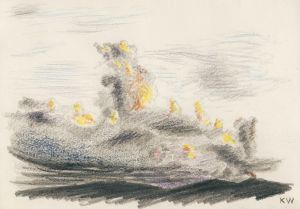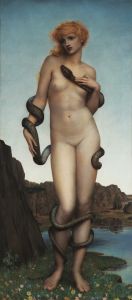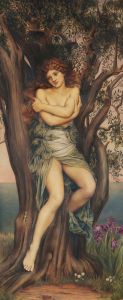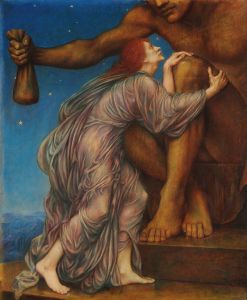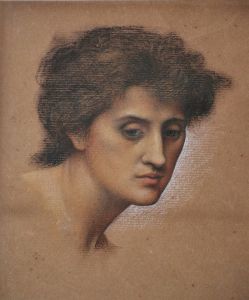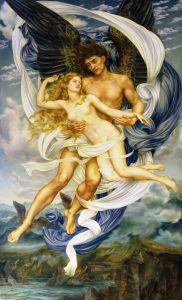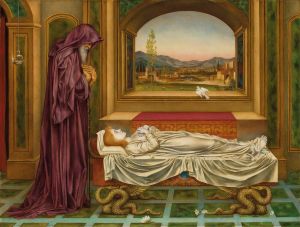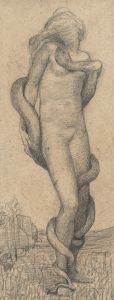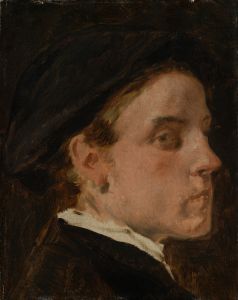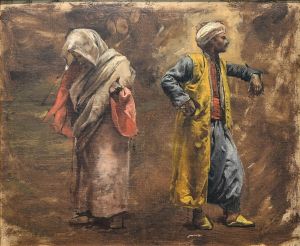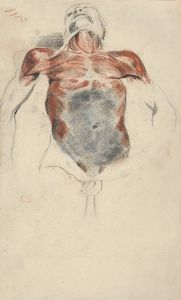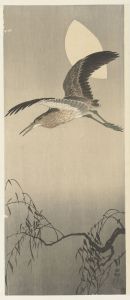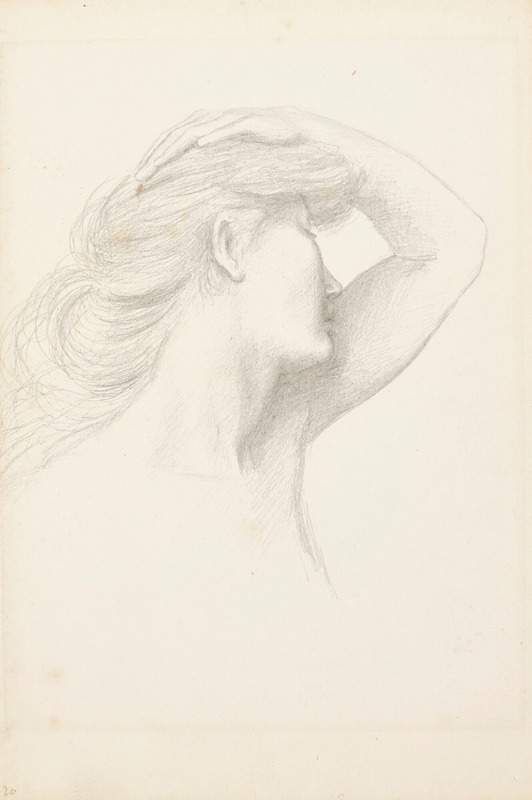
Study For Luna
A hand-painted replica of Evelyn De Morgan’s masterpiece Study For Luna, meticulously crafted by professional artists to capture the true essence of the original. Each piece is created with museum-quality canvas and rare mineral pigments, carefully painted by experienced artists with delicate brushstrokes and rich, layered colors to perfectly recreate the texture of the original artwork. Unlike machine-printed reproductions, this hand-painted version brings the painting to life, infused with the artist’s emotions and skill in every stroke. Whether for personal collection or home decoration, it instantly elevates the artistic atmosphere of any space.
Evelyn De Morgan, an English painter associated with the Pre-Raphaelite movement, created "Study for Luna" as part of her exploration of mythological and allegorical themes. De Morgan, born in 1855, was known for her vivid use of color and her interest in spiritual and mystical subjects, often drawing inspiration from classical mythology and literature.
"Study for Luna" is a preparatory work for her larger painting "Luna," which depicts the Roman goddess of the moon. In Roman mythology, Luna is the divine embodiment of the moon, often portrayed as a beautiful woman who drives a chariot across the night sky. De Morgan's fascination with celestial themes is evident in this study, as she captures the ethereal and serene qualities associated with the moon goddess.
The study showcases De Morgan's meticulous attention to detail and her skill in rendering the human form. Her use of soft, flowing lines and delicate shading creates a sense of movement and grace, characteristic of her style. The figure of Luna is typically depicted with attributes such as a crescent moon, which may be present in the study, symbolizing her connection to the lunar cycle and her role as a celestial deity.
De Morgan's work often reflects her interest in the spiritual and the metaphysical, and "Study for Luna" is no exception. The painting can be seen as an exploration of the divine feminine and the mysteries of the cosmos, themes that were prevalent in her oeuvre. Her paintings frequently convey a sense of otherworldliness, inviting viewers to contemplate the deeper meanings behind the mythological figures she portrayed.
Evelyn De Morgan was a prominent figure in the late 19th and early 20th centuries, and her work was influenced by the Pre-Raphaelite Brotherhood, a group of artists who sought to return to the detail, intense colors, and complex compositions of Quattrocento Italian art. Although she was not an official member of the Brotherhood, her style and thematic choices align closely with their ideals.
"Study for Luna" exemplifies De Morgan's ability to blend mythological subject matter with her unique artistic vision. Her paintings often feature strong, independent female figures, reflecting her progressive views on women's roles in society. De Morgan was an advocate for women's rights and suffrage, and her art frequently challenged traditional gender norms.
The study serves as a testament to De Morgan's skill as a draughtswoman and her ability to convey complex themes through her art. While "Study for Luna" is a preparatory work, it holds intrinsic value as a piece of art in its own right, offering insight into De Morgan's creative process and her approach to depicting mythological subjects.
Evelyn De Morgan's legacy continues to be celebrated, and her works are held in various collections, including the De Morgan Foundation, which preserves and promotes the art of both Evelyn and her husband, the ceramicist William De Morgan. "Study for Luna" remains an important part of her artistic repertoire, illustrating her contribution to the Pre-Raphaelite movement and her enduring fascination with the mystical and the divine.





